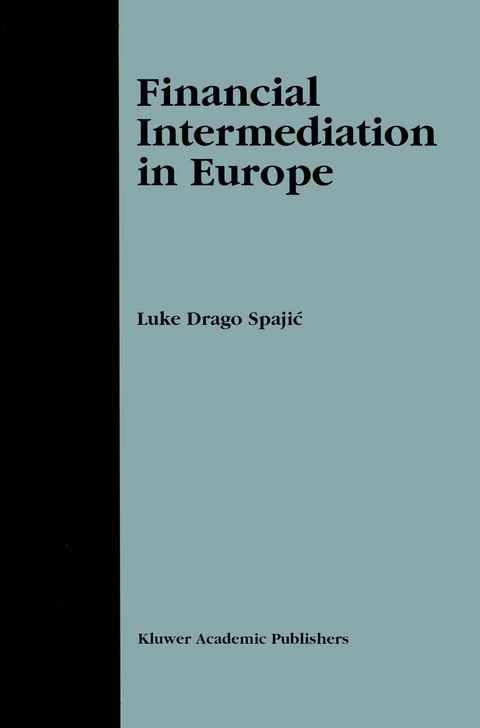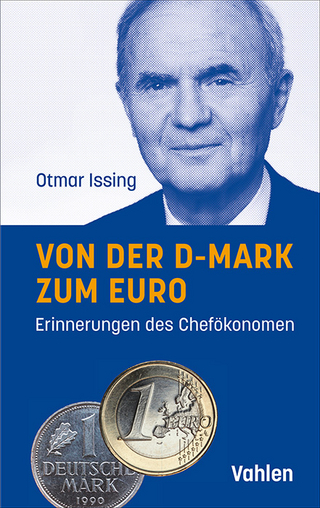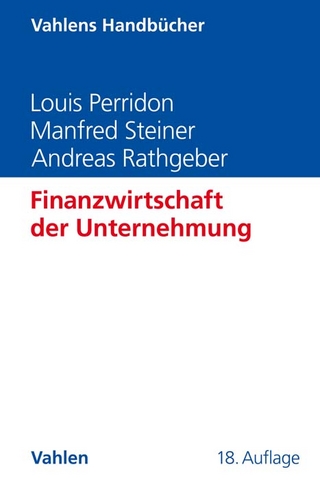
Financial Intermediation in Europe
Springer-Verlag New York Inc.
978-1-4020-7009-9 (ISBN)
1 Introduction.- 1.1 Financial and Monetary Integration in Europe.- 1.2 Synopsis.- 1.3 Collaborative Research.- 2 Banking under EU Integration.- 2.1 Introduction.- 2.2 The Single Market Programme and EU Banking.- 2.3 Assessing the Impact of Integration on EU Banking.- 2.4 Bank Pricing under Integration.- 2.5 Bank Strategies under Integration.- 2.6 Concluding Remarks.- 3 Theoretical Foundations of Financial Intermediation.- 3.1 The Nature of Financial Intermediation.- 3.2 Connecting the Financial System with the Economy.- 3.3 Modern Theory of Finance and the Problem of Banking.- 3.4 So What Do Banks Do?.- 3.5 Analysing the Bank Balance Sheet.- 3.6 Regulation in Banking.- 3.7 Concluding Remarks.- 4 The Analysis of Competition and Applications to Banking.- 4.1 Introduction.- 4.2 Competition Theory and Applications to Banking.- 4.3 Double Competition in Banking.- 4.4 Problems in the Analysis of Competition in Banking.- 4.5 Concluding Remarks.- 5 Contributions to the Theory of Banking Competition.- 5.1 Introduction.- 5.2 Balance Sheet Segmentation.- 5.3 Regulation of Bank Capital and Balance Sheets.- 5.4 Strategies in Banking Competition.- 5.5 Influences on Bank Pricing.- 5.6 Concluding Remarks.- 6 European Banking Responses to Yield Curve Impulses.- 6.1 Introduction.- 6.2 Connections Between Term Structure and Banking.- 6.3 Banking System Sensitivity to Monetary Policy.- 6.4 Empirical Evidence.- 6.5 Results: Tables and Simulations.- 6.6 Analysis of Results.- 6.7 Concluding Remarks.- 6.8 Appendix: Term Structure as Information About the Economy.- 7 Reflections.- 7.1 Contributors to Financial Economics.- 7.2 Monetary Integration: The View from Banking.- 8 Bibliography.
| Erscheint lt. Verlag | 31.10.2002 |
|---|---|
| Zusatzinfo | XVI, 230 p. |
| Verlagsort | New York, NY |
| Sprache | englisch |
| Maße | 155 x 235 mm |
| Themenwelt | Wirtschaft ► Betriebswirtschaft / Management ► Finanzierung |
| Betriebswirtschaft / Management ► Spezielle Betriebswirtschaftslehre ► Bankbetriebslehre | |
| Wirtschaft ► Volkswirtschaftslehre ► Finanzwissenschaft | |
| Wirtschaft ► Volkswirtschaftslehre ► Makroökonomie | |
| ISBN-10 | 1-4020-7009-8 / 1402070098 |
| ISBN-13 | 978-1-4020-7009-9 / 9781402070099 |
| Zustand | Neuware |
| Informationen gemäß Produktsicherheitsverordnung (GPSR) | |
| Haben Sie eine Frage zum Produkt? |
aus dem Bereich


